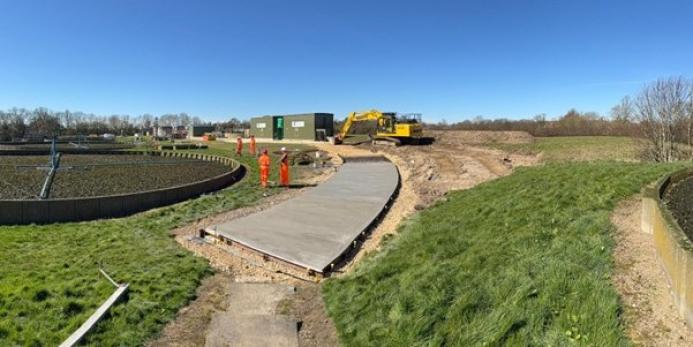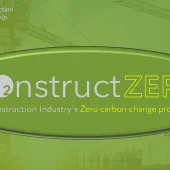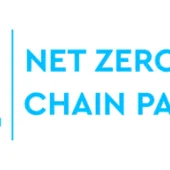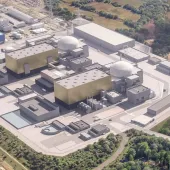Graphene concrete laid on live UK site
Graphene-enhanced, lower-carbon concrete poured at Northumbrian Water site
A novel concrete mix containing graphene and micronised limestone has been successfully poured at a live wastewater treatment facility in the North East, achieving nearly 50% carbon savings per cubic metre.
The pour, which took place in April 2025, forms part of a collaborative R&D programme between Cemex UK, the Graphene Engineering Innovation Centre (GEIC) at the University of Manchester, Galliford Try, Sika and Northumbrian Water. It involved 15 m³ of a new lower-carbon formulation known as CoMLaG — Combining Micronised Limestone and Graphene.
Designed to cut emissions while maintaining performance, the CoMLaG mix replaces a portion of high-carbon clinker with GGBS and micronised limestone. Graphene, added at less than 0.1% by weight of cementitious content, was used to recover strength typically lost with clinker reduction. The graphene-based additive was developed and stabilised by the GEIC and scaled with support from Cemex’s National Technical Centre.
According to slump and compressive strength tests, the graphene-enhanced mix achieved a 28-day strength of 78.3 N/mm², closely matching the CEM I control mix (82.6 N/mm²). Early-age strength was slightly lower, but graphene narrowed the performance gap despite a significant reduction in cement content.
Cemex’s i-Con system was used to monitor curing and strength gain in real time, helping to validate performance under site conditions.
“This project is a fantastic example of industry-led development with meaningful university input,” said Lisa Scullion, application manager at the GEIC. “Graphene-enhanced systems like CoMLaG open the door to concrete that performs well while cutting its environmental impact.”
Mike Higgins, director of quality and product technology at Cemex UK, added: “The successful deployment of CoMLaG on a live site demonstrates how advanced materials can reduce emissions without compromising on performance. Collaboration was key to taking this from lab trial to commercial-scale pour.”
The next phase of work will aim to optimise the mix design, improve admixture compatibility, and test performance with different aggregates to enable wider adoption.
The pour is one of several graphene concrete trials emerging from the GEIC’s partnership network, as part of wider efforts to decarbonise structural concrete and precast systems.







